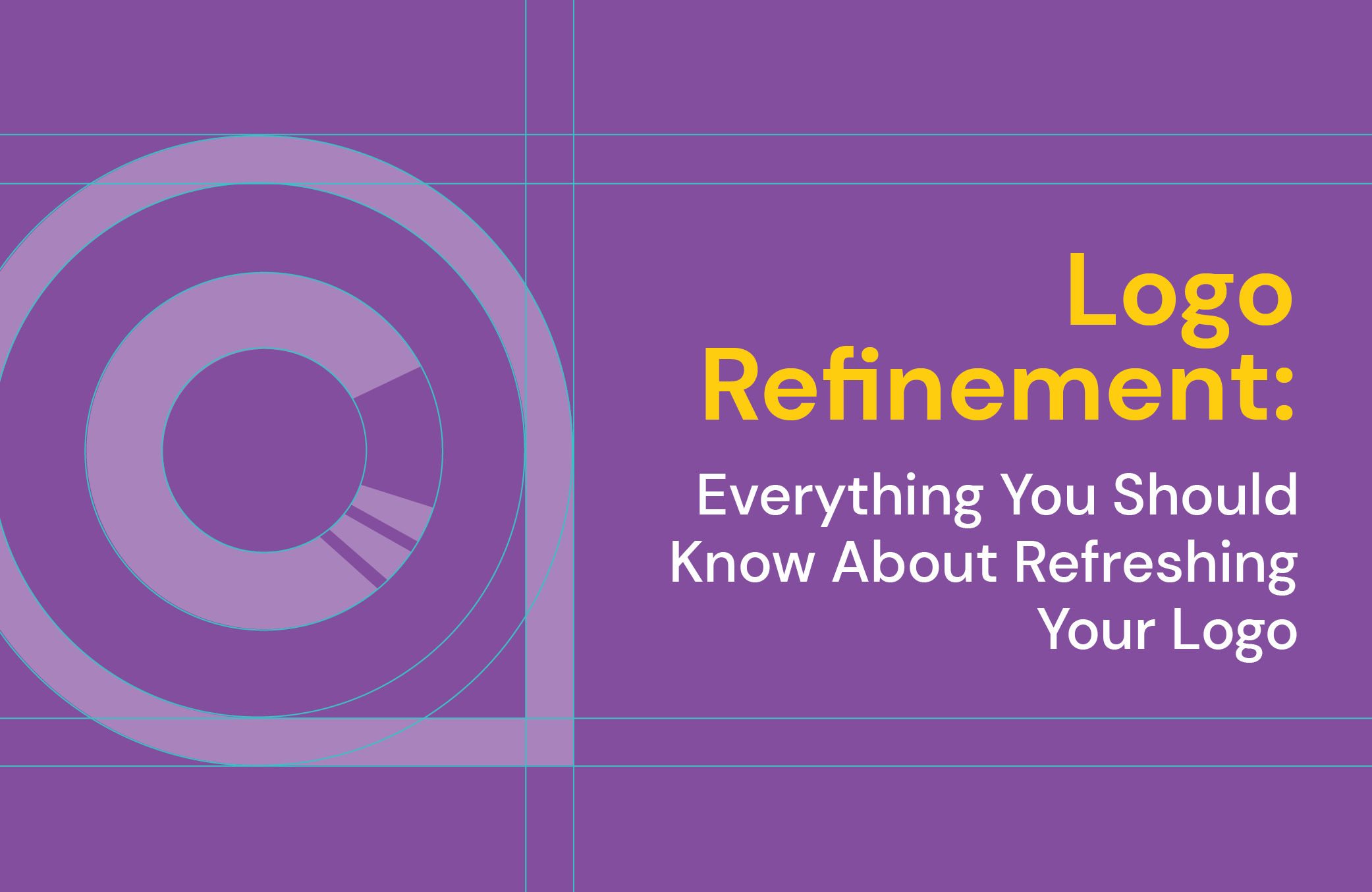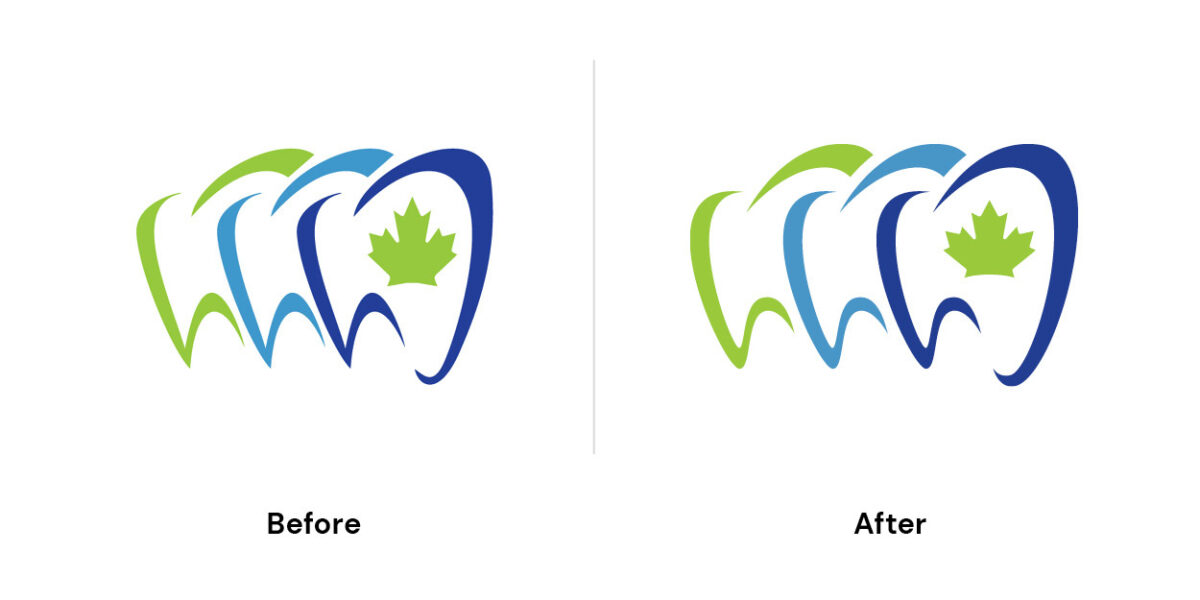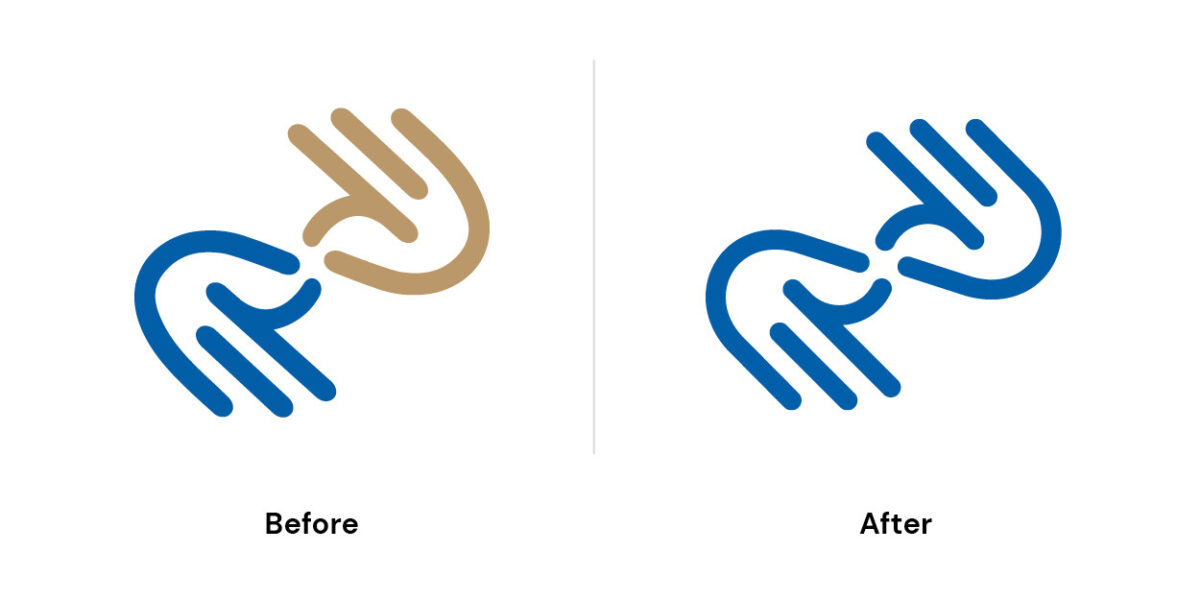
Logo Refinement: Everything You Should Know About Refreshing Your Logo
Your company’s logo serves as more than just a decorative element. It is a powerful visual symbol that embodies your brand’s identity, communicates its core values, and forms an essential part of the narrative that you wish to convey. It’s the first point of contact for many customers, and often, it’s the aspect of your brand that people will remember most vividly.
Why, then, do you need logo refinement?
Need for Logo Refinement
In the crowded marketplace that exists today, a strong and relatable brand identity can make the difference between your company and product’s failure or success. As businesses evolve and markets change, there comes a time when this critical piece of branding—your logo—needs to be updated or refined. This brings us to the concept of ‘logo refinement’, an incredibly significant but often overlooked process in ensuring a brand’s relevancy in the modern market.
Logo refinement is not about reinventing the wheel; rather, it’s about making subtle adjustments to the existing logo, enhancing its strengths, and ensuring it continues to resonate with your audience. It could mean updating the color palette, modifying the typography, or simplifying the design elements for better scalability and readability. In essence, it’s about striking a balance between preserving the established brand identity and adapting to current design trends and consumer preferences.
In today’s fast-paced, visually oriented market, logo refinement has gained relevance like never before. Businesses need to stay agile, and their logos, being a key element of their brand identity, need to reflect this dynamism. To delve more into how a strong logo and brand identity can drive agility in marketing, check out this article.
Understanding Logo Refinement
Logo refinement, as the term suggests, is about fine-tuning an existing logo. It includes making minor adjustments and improvements to enhance its overall design and effectiveness. It’s not about making dramatic changes or completely redesigning your logo; instead, it’s about preserving the brand equity you’ve built while enhancing the elements that make your logo unique and recognizable.
Unlike a full logo redesign or a complete rebranding, logo refinement often involves subtle changes. This could be as simple as updating the typography, tweaking the color palette, or simplifying the design for better scalability and legibility. The key is to make your logo more modern and relevant without alienating your existing customer base.
Industry experts agree on the importance of logo refinement in maintaining a brand’s competitive edge. Logos should be free of trends and tricks, in that they shouldn’t be updated frequently. But, there comes a time when every logo needs to be reviewed and possibly updated, depending on the business and market over a period of time.
Logos, like any other aspect of a brand, need to evolve as the company grows, consumer tastes change, and design trends shift. When done correctly, logo refinement can help a brand stay fresh, relevant, and appealing to its target audience. It’s an essential part of brand management that ensures your logo continues to reflect your brand’s personality, values, and promise effectively.

Identifying the Need for Logo Refinement
Logos are more than just aesthetic elements. They are crucial communication tools that can influence customer perception and behavior. Proper vectorization ensures the elements in your logo are drawn with clean, smooth lines and shapes—no rough bezier curves and anchor points here! It also ensures the elements have enough contrast and spacing so the logo will look great at any size without impacting its essence. However, certain indicators might suggest that your logo needs refinement.
- Outdated Design: If your logo looks like it’s from a different era, it may be time for a refresh.
- Poor Scalability: If your logo doesn’t look good in different sizes or on various platforms, refinement is necessary.
- Complexity: If your logo is overly complex or hard to understand, simplifying it could be beneficial.
- Bad Vectorization: If your logo is not vectorized correctly, its application is severely limited; refinement can resolve this foundational problem.
The Impact of an Outdated or Poorly Designed Logo
An outdated or poorly designed logo can negatively affect your brand image. This is because it can create a disconnect with your audience and may even cause potential customers to question your relevance or credibility.
- Impact on Brand Image: A modern, well-designed logo can significantly enhance your brand image. It can convey professionalism and reliability, making your brand more appealing to consumers.
- Customer Perception: Customer perception can be heavily influenced by the visual elements of a brand, including the logo. An outdated logo can lead consumers to perceive your brand as out-of-touch or irrelevant.
The Influence of Logo Design on Consumer Behavior
Research indicates that logo design can have a significant impact on consumer behavior. A study published in the Journal of Marketing Research found that simple logo designs are more likely to be recognized and favored by consumers. This demonstrates the importance of keeping your logo clean, simple, and easily recognizable.

The Logo Refinement Process
Logo refinement is not a process to be taken lightly. It requires thoughtful consideration and strategic decision-making to ensure that the updated logo enhances the brand image, aligns with current market trends, and positively influences consumer behavior.
Below are the essential steps to guide you through this journey.
Step 1 – Evaluating Your Current Logo
Before making any changes, it’s crucial to conduct a thorough evaluation of your current logo. An effective logo audit involves asking yourself key questions:
- How well does the logo represent our brand identity?
- Does the logo resonate with our target audience?
- Is the logo visually appealing across different platforms and sizes?
- Does the logo convey the message we want to send?
By answering these questions, you can identify what works in your existing logo and areas that need improvement.
Step 2 – Gathering Feedback and Ideas
Then comes market research – an integral part of the logo refinement process. Gathering feedback from customers, employees, and stakeholders can provide valuable insights into how your logo is perceived.
Focus groups are a useful tool for in-depth discussions about your logo’s strengths and weaknesses. Surveys can help you reach a broader audience and collect quantitative data about your logo’s effectiveness.
Step 3 – Working with Design Professionals
Choosing the right designer or agency is crucial for your logo refinement. Look for professionals with a strong portfolio, positive client reviews, and experience in your business sector.
Communicating your brand vision to your selected design team is equally important. Provide them with clear guidelines about your brand values, target audience, and the message you aim to convey through your refined logo.
Step 4 – Design Principles for Logo Refinement
The principles of color, typography, and simplicity play a significant role in effective logo design.
- Color: Colors evoke emotions and associations. Choose colors that align with your brand personality and appeal to your target audience.
- Typography: The typeface should be legible and reflect your brand’s character. It can be modern, traditional, playful, or professional, depending on your brand identity.
- Simplicity: A simple logo is easily recognizable and memorable. Avoid overly complicated designs that can confuse your audience.
Incorporating these principles into your logo refinement will help create a design that is visually appealing, resonates with your audience, and effectively communicates your brand story.
Common Mistakes in Logo Refinement and How to Avoid Them
Logo refinement can be tricky. Here are common pitfalls and how to sidestep them.
Ignoring the Brand’s Core Identity
Mistake: Overhauling the logo to the point where it loses connection with the original brand identity.
Solution: Maintain key elements that represent your brand while refining the logo.
Neglecting Target Audience Preferences
Mistake: Overlooking the preferences of your target audience during the refinement process.
Solution: Conduct market research to understand what resonates with your audience.
Overcomplicating the Design
Mistake: Adding too many elements, making the logo complex and confusing.
Solution: Aim for simplicity. A simple design is usually more effective and memorable.
Inconsistent Application
Mistake: Failing to ensure the refined logo works well across different platforms and sizes.
Solution: Test your logo on various mediums to ensure its versatility and scalability.
Skipping Professional Help
Mistake: Attempting to refine the logo without professional guidance, risking quality and effectiveness.
Solution: Collaborate with experienced designers who can bring your vision to life while ensuring design best practices.

Measuring the Success of Your Logo Refinement
You’ve done the hard work to refine your logo. But the task does not end there. Testing the effectiveness of your refined logo is crucial. Here are the various aspects that can help you track its impact.
Brand Recognition
Metric: Monitor increases in brand recognition post-logo refinement.
Tool: Use brand tracking surveys to gauge brand awareness and recall.
Customer Perception
Metric: Measure changes in customer perception after introducing the new logo.
Tool: Customer surveys and focus groups can provide valuable insights.
Revenue Impact
Metric: Track revenue before and after logo refinement to assess financial impact.
Tool: Use sales data and analytics tools to measure revenue changes.
Key Performance Indicators (KPIs)
KPIs: Set KPIs such as social media engagement, website traffic, and conversion rates.
Tool: Use analytics platforms like Google Analytics or social media analytics to track these KPIs.
Remember, measuring logo effectiveness is ongoing. Regular monitoring ensures your logo continues to resonate with your audience, and contributes to your continued understanding and awareness of how your customers perceive your logo.
Your logo is more than just an aesthetic element; it’s the visual representation of your brand’s identity. That’s why it should resonate with your audience and be easily recognizable across various platforms. By following these guidelines, you can create a refined logo that not only aligns with your brand’s core values but also stands out in the competitive marketplace. So embark on this journey with due diligence and watch your brand recognition soar to new heights.
Thinking about a logo update but not sure where to start?
The design specialists at Cyan can help! Contact Us.

Discover what Cyan can do for you
We want to get to know you better so we can understand what services are going to help you meet your goals.